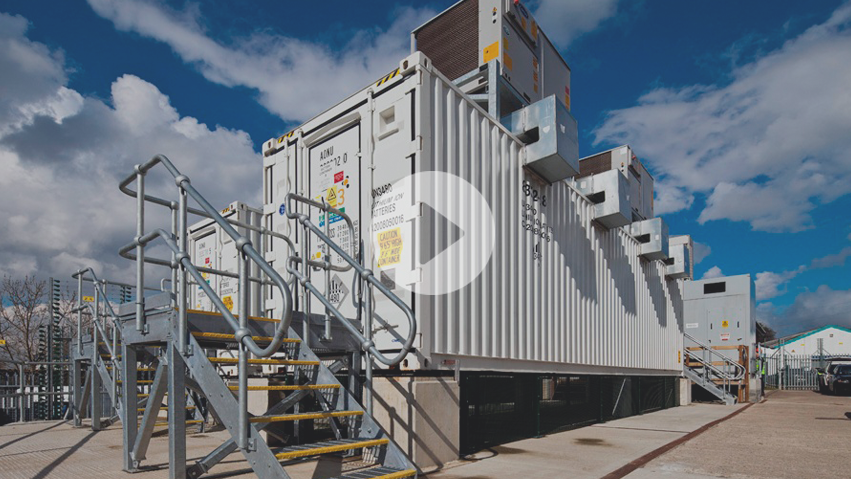CIGRÉ 2012: Use of battery storage to increase network reliability under faulted conditions
Overview
The strategic use of Electrical Energy Storage (EES) has been shown to have the potential to deliver increased power flow management capability and thus defer or remove the need for high-cost network reinforcement [1-6]. Often in such scenarios the network is assumed to be intact. EES can however provide increased network reliability under an (n-1) or (n-2) situation as well.
Under faulted conditions, one or more circuits in a power distribution network are not available to carry electrical energy to meet customer demand. This results in a new power flow equilibrium, in which one or more unfaulted circuits are required to carry more power than they would normally carry with the network intact. This increased power flow may exceed the rating limitations of one or more of the circuit components – transformer, switchgear, overhead line or underground cable. This may result in customers becoming disconnected from the network.
An alternative strategy would be available if EES, for example a battery bank, were installed and connected at an appropriate location in the network. By charging up the battery at non-peak times of day, and then discharging it throughout the peak period, overloading the limiting component can be avoided. Even if a reduced degree of overloading remains, it could be possible to remove this by performing a smaller number of network switching operations. This could allow disconnection of a smaller number of customers or avoid the need for disconnection altogether.
This approach is illustrated by a case study based on an actual suburban distribution network in the North of England. The paper describes this network in detail. It shows that, following the (n-2) loss of high voltage infeeds, reconfiguration at a lower voltage is required. Although such reconfiguration is adequate to meet all demand throughout the summer low demand period, there are 133 days during the winter period when it is insufficient to meet full demand. On such days, up to 17 MWh of energy cannot be supplied even when the limited amount of lower voltage interconnection is used to capacity.
EES can significantly reduce the energy not supplied, and therefore the number of customers not supplied, under such faulted conditions. Using actual demand data, predictions of the need to draw on EES can be made on a half-hourly basis. These predictions can be used in the control room to devise an equitable scheme of Rota Disconnection which will minimize, or even eliminate, the need for and extent of customer disconnection.
This present is an initial approach to applying a combination of EES and network risk methodologies to a network under faulted conditions.








